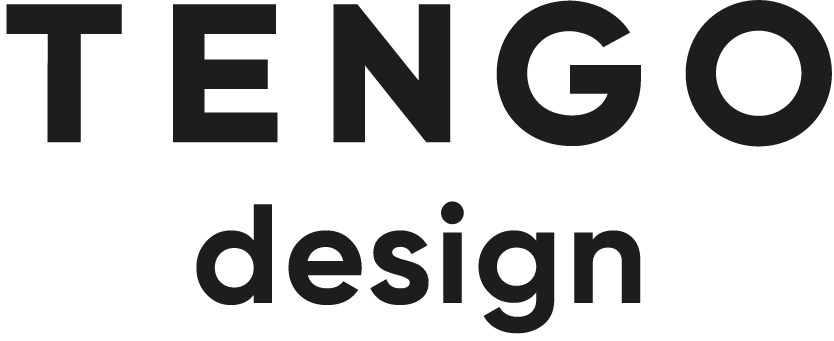Conference room design: which table layout is the best?
In most offices, a conference room is an essential part of the interior furnishings. While it is widely known that having such a space has many benefits, it is sometimes worth considering its layout. What is the best layout for conference room tables? How to plan the design of a meeting room in an office? In today's article, we will present the main advantages of several popular arrangements of conference tables.
Which conference room table layout to choose?
Designers at Tengo often include conference rooms in their office interior projects. It's no wonder - this element of office design meets the expectations of our clients. In larger commercial spaces, we often allocate space for several conference rooms. However, especially in rooms with a slightly larger area, it is worth considering the arrangement of tables. There are several possibilities, each with its own advantages and disadvantages.
In small conference rooms, we usually have a bit fewer options. Nevertheless, much depends on the purpose of the room - whether it is intended for team meetings, participation in video conferences, or training sessions. The layout of tables in a conference room also depends on its equipment. If participants are going to use a whiteboard, a projector, or a multimedia display, it is important to ensure the proper arrangement of workstations. It should also not make it difficult to the movement of meeting participants, allowing for a high level of comfort and work safety.
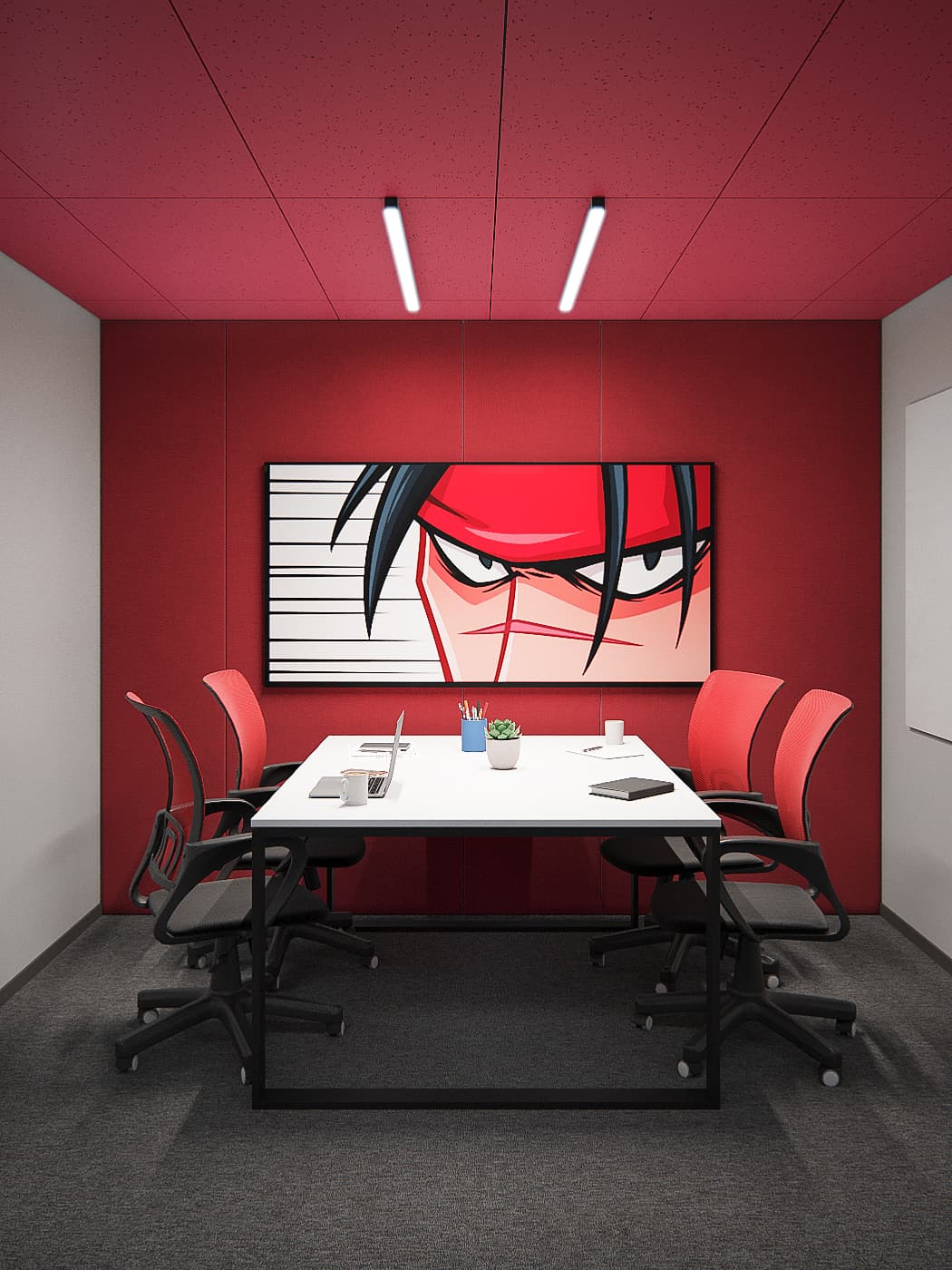
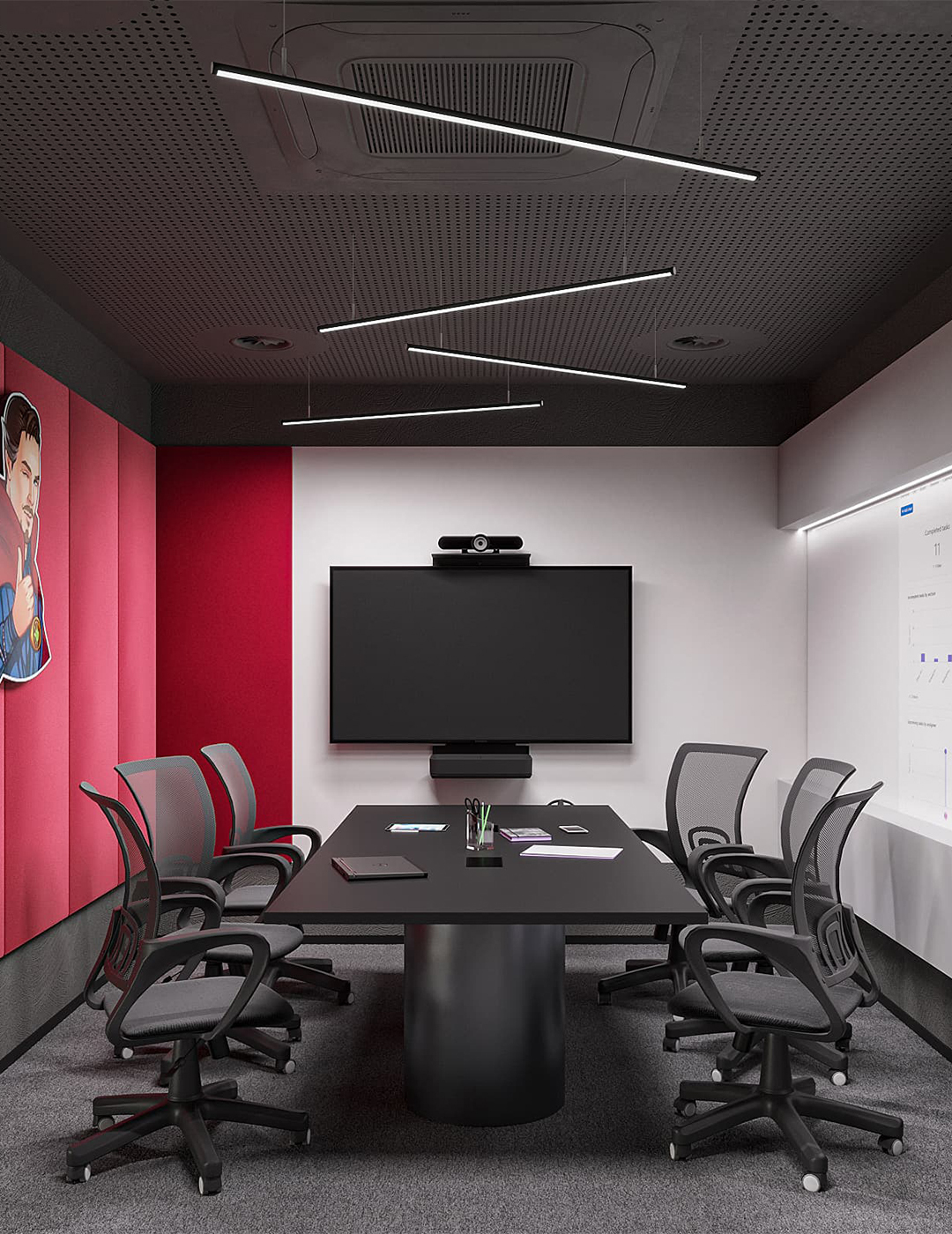
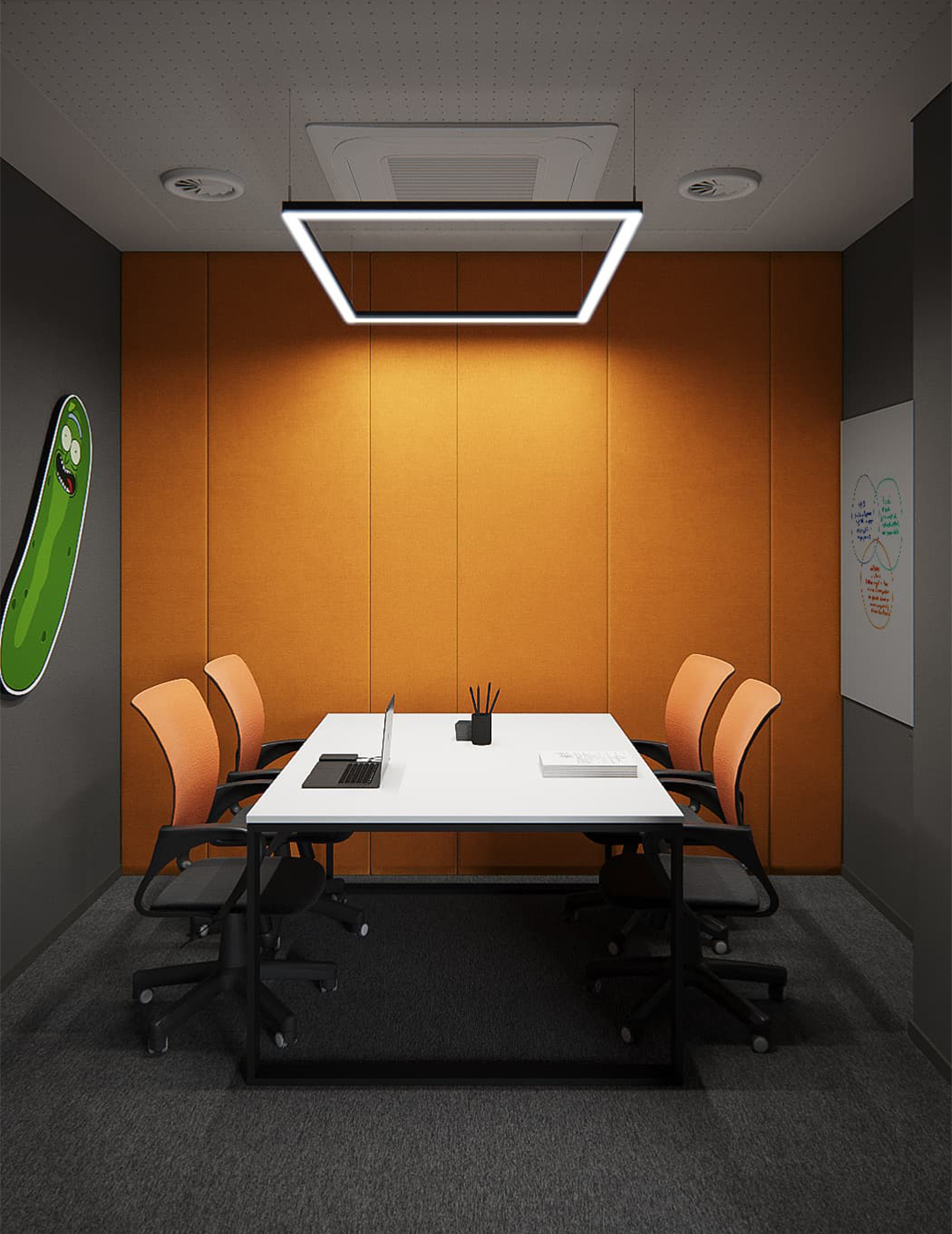
Conference room in a horseshoe or "U" shape
The arrangement of tables in conference rooms with a slightly larger area often takes the shape of a letter "U." Placing the tables in a horseshoe shape is ideal if you plan to use the room for training sessions, audiovisual presentations, or slightly larger conferences. The tables are positioned along three walls of the rectangle, leaving the fourth side open. This allows the meeting facilitator to have sufficient space, and all conference participants can see the presenter. This layout works well for various presentations or video conferences involving a significant number of people.
All individuals in a horseshoe-shaped conference room have a good view, can speak up, and are visible during video chats. However, a drawback may be a slightly smaller maximum capacity for participants in a room of a given size.
Intimate conference room with a single table
Designing a conference room with a single, large table allows for excellent collaboration conditions. It is an ideal layout for meetings of small teams consisting of several to a different people. In this case, chairs or armchairs are arranged around the table.
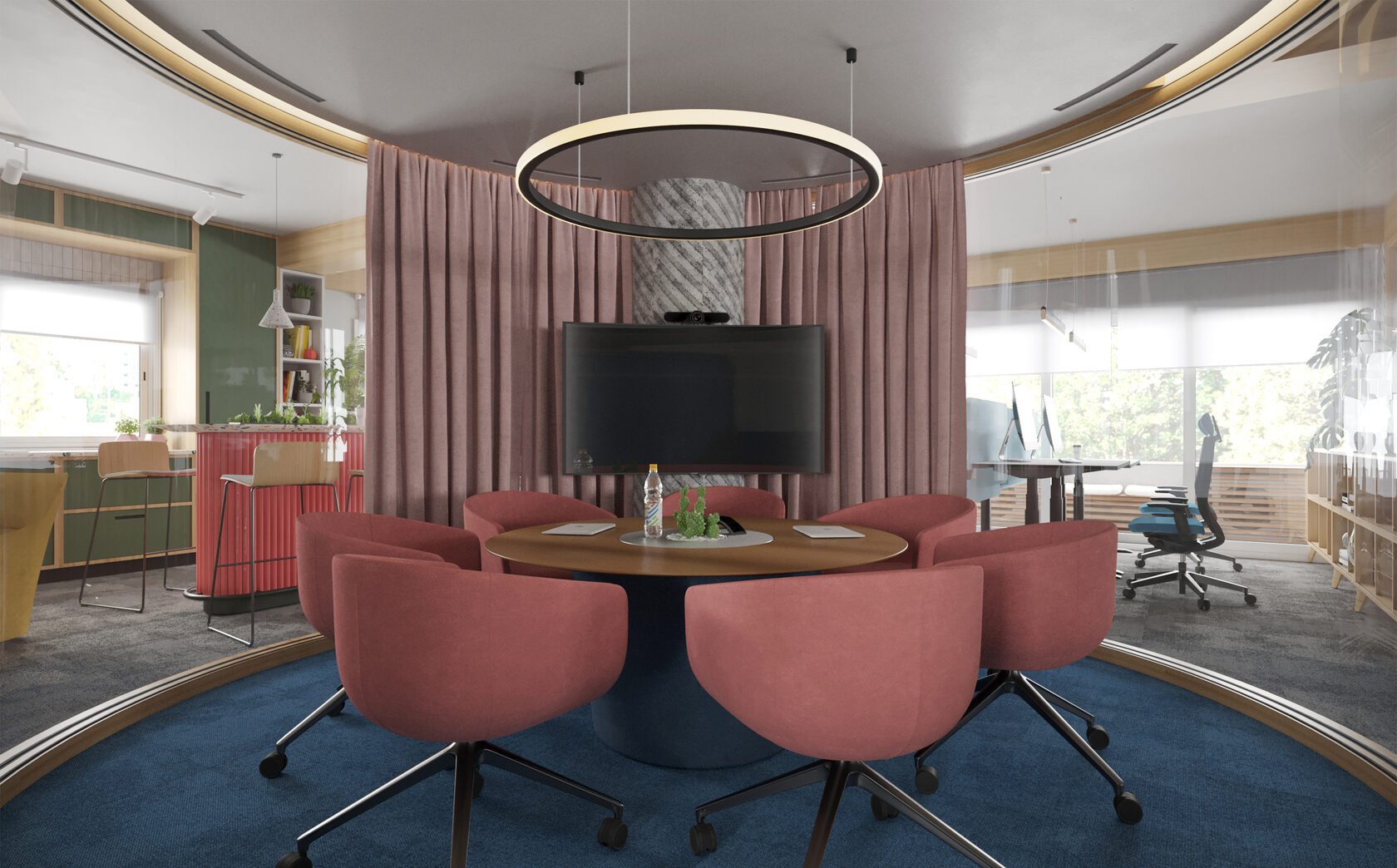
For an intimate conference room layout, the size of the table mostly depends on the size of the room itself. Solid wood tables with a single-piece top make a great impression. It's important to ensure proper lighting for the conference table in this case.
Conference room for office use, auditorium layout
Another proposal is the school-style conference room layout, often referred to as an auditorium layout. It involves placing multiple rows of long tables in the room, with participants sitting on benches or chairs. This arrangement is ideal for conducting training sessions or presentations. It can accommodate more people on a relatively small surface area compared to other layouts.
However, such a layout of tables can make it difficult to collaborate. This layout is not particularly suitable for teamwork either.
Mobile tables - make the conference room multifunctional
Not sure which table layout is the best for your conference room? It's not surprising as different companies have diverse needs. You don't have to choose a single seating arrangement. Mobile tables and an appropriate number of chairs allow you to quickly prepare the conference room to suit specific requirements.
In our opinion, such a flexible solution is the best. Giant magnetic boards or screens with easy repositioning can complement the setup. Depending on the needs, you can create virtually any layout for the room. Meeting productivity will increase, and one conference room can replace several, which is beneficial for the office equipment budget!
